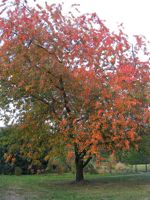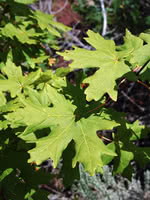Mon-Fri 9am - 5pm Mountain time
Black Cherry vs Big Tooth Maple
Prunus serotina
Acer grandidentatum
NOT AVAILABLE THIS SEASON - MIGHT RETURN
NOT AVAILABLE THIS SEASON - MIGHT RETURN
Black Cherry is common in eastern North America but a rare find elsewhere. This tree is shade tolerant and is often found in old fields, forest openings, and along fencerows.
The fruit is edible and is commonly used to flavor rum and brandy. It is also edible and often eaten fresh or used in wine or jelly. Black Cherry trees typically begin producing fruit when they are 10 years of age.
Black Cherry wood is a rich reddish-brown color and is strong, making it valued in cabinetry and woodworking. It is often used in reclamation as well.
The leaves can poison livestock as they contain cyanide derivatives and precursors. However, many have noted that deer still seem to browse their trees with impunity and birds and other animals eat the fruit when available.
Big Tooth Maple is a versatile, cold hardy maple variety that is ideal for small landscapes. It has high ornamental appeal due to its striking red-gold autumn foliage and multi-stemmed form.
Big Tooth Maple is highly deer resistant and drought tolerant as well. Keep in mind the size and form of this tree can vary due to climate, moisture, and growing conditions. In drier spots, you'll notice Big Tooth Maple is more shrub like. In moist, full sun conditions, this tree can grow to be up to 50 ft tall. Plan your site accordingly.
Black Cherry Quick Facts
Big Tooth Maple Quick Facts
Toxicity: bark and wilted leaves toxic to livestock

